7 Different Types of Welding Helmets Explained with pictures
Welding is a risky profession, especially if you lack the necessary safety gear.
A welding helmet is one of the most important items of equipment that every welder should own.
To ensure that the task is done properly, it’s important to be aware of the many types of welding helmets available.
Every welding helmet must comply with ANSI standards, which call for lenses that are heat-, UV-, and infrared-protective.
That does not, however, imply that you have no options. Depending on your preferences and style, there are numerous welding helmet options.
Let’s look at it!
The Different Welding Helmet Types
The 7 Types Of Welding Helmets
There are seven (7) basic types of welding helmets or hoods
The one that’s right for you depends mainly on your personal preference and the kind of job you need to get done.
Below we’ll lay out the advantages and disadvantages of each type.
1. Passive Welding Helmet
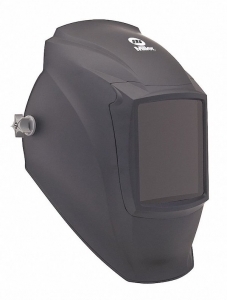
A standard helmet with a fixed shade lens that is always dark is referred to as a passive welding helmet.
You can buy lenses to cover the various shades in addition to the #10 lens, which is the lens most frequently found on passive welding helmets or hoods
This type of helmet has the drawback that you have to take it off in order to observe what you’re doing before you make an arc.
This can be a problem if you’re new to welding because you can’t see your work via the lens.
But many skilled welders are aware of how to set up their work, start an arc, and finish the weld while wearing a passive welding helmet.
For seasoned welders on a budget, this sort of helmet is a fantastic option because of how reasonably priced they are in general.
Additionally, lenses are not too expensive, so you can purchase a variety of colors to use for different types of welds.
In addition to being lightweight, passive welding helmets are much more durable than other types. However, using them is cumbersome.
Pros
- Compared to auto-darkening helmets, it costs a lot less.
- It is portable, uncomplicated, and straightforward to operate.
- Lens replacement is cheap and simple.
Cons
- The lens remains opaque.
- To inspect your work in between arcs, you must remove the hood.
- Easily broken lenses
2. The solar-powered lens helmet
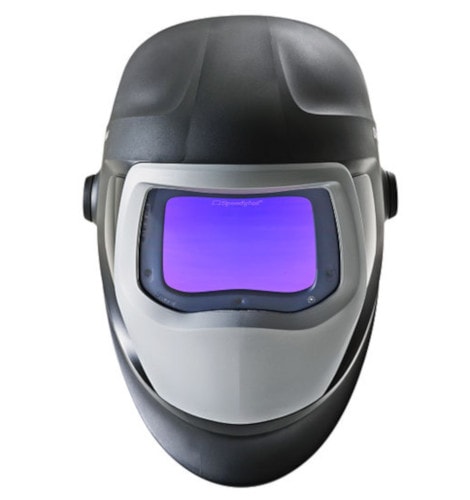
The solar-powered lens helmet
Some auto-darkening helmets employ a set battery that can’t be replaced, as it is designed to be recharged by solar energy.
The helmet will be powered by a battery to start, but solar energy will keep it running.
Because the battery pack doesn’t do much work, using solar-powered helmets could be cost-effective.
Additionally, while not in use, this style of helmet automatically turns off the lens.
The solar-powered helmet’s affordability is thereby significantly increased.
The fact that a solar-powered helmet is not yet ready for usage is one of the reasons why many welders are hesitant to choose one.
The day before a project, one would always need to remember to set it out in the sun to recharge.
Failure to do so would squander valuable time on a project, which may be quite expensive.
3. Variable Shade Auto Darkening Welding Helmet
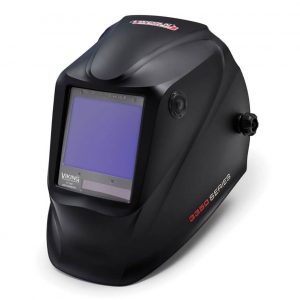
However, the light sensors automatically change the display to obscure your view and protect your eyes when you hit an arc.
The majority of auto-darkening welding helmets range in color from #8 to #13.
Depending on your job and the strength of your welding flame, you can adjust the shade level.
In order to avoid overexposing oneself to the brightness of your arc when doing so, it is preferable to start darker than you anticipate being necessary and adjust down from there.
Auto-darkening helmets are fantastic since you can see through them before you start working.
By doing this, you may evaluate the weld piece and your surroundings before starting to work.
All of this may sound wonderful, and it is, but there is a cost. Auto-darkening welding helmets are typically the priciest options.
Although some claim they are not required for the majority of welding projects and are concerned about the possibility of them breaking down, others contend they are well worth the price.
Pros
- To suit the job type, you can select your shade level.
- Before you hit an arc, the lens allows for clear vision.
- You may inspect your work while wearing the helmet.
- The moment you make an arc, the lens immediately darkens.
- This kind of helmet is frequently advised for safety.
Cons
- The welding helmet with the highest price is this one.
- The LCD needs electricity.
Batteries need to be changed. - Charge times for solar energy might be lengthy.
4. Pancake Welding Helmet
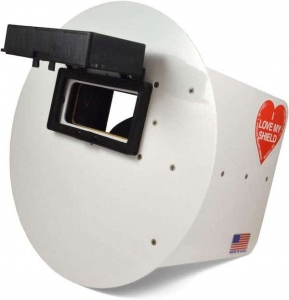
- Lightweight and comfortable to wear for extended periods of time, pancake welding helmets.
- Your entire face is protected by the helmet’s pancake shape.
- Balsa box goggles block light coming from all sides and behind, allowing you to see clearly.
- The balsa box fits well because of its softness and light weight.
Cons
- Indoor welding is not its intended use. Only outdoor welding projects, such as welding on pipelines, require the use of pancake welding helmets.
5. The battery-powered helmet
The battery-powered helmet employs a rechargeable or interchangeable lithium-ion battery.
Welders frequently work long hours finishing challenging projects.
If they grumble about having to manually adjust their lenses, consider how difficult it must be to use a solar-powered helmet.
Although it is more cost-effective than a battery-operated helmet, many welders would rather spend a little more on battery replacements than find themselves in a sticky situation right before a project.
Both the solar-powered and battery-powered helmets have their benefits and drawbacks, so it really depends on personal preference.
6. Leather Welding Mask
Although they’re not very common, leather welding masks are made to protect your entire head in addition to your face, eyes, and neck.
With a google shield over your eyes, they fit over the top of your head and completely enclose you from the neck up.
They have a lens that darkens and can be adjusted up and down.
For use while working in confined locations, this kind of helmet is intended.
Because it shields you from flying sparks and debris, it is also perfect for welding overhead.
Additionally, it resists heat and is typically composed of tough leather.
Pros
- To give support and strength, it is made of tough leather.
- To shield you from sparks and flying objects, it completely covers your head and eyes.
Leather welding hoods are the best for overhead welding and working in confined spaces.
Cons
- It’s less adaptable than other welding helmets.
- It might get warm and uncomfortable if worn continuously.
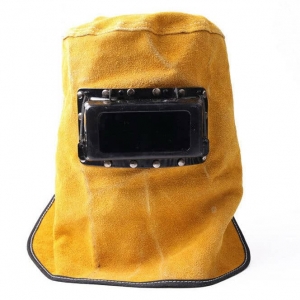
7. Fixed Shade Auto Darkening Welding Helmet
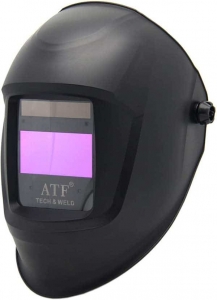
The same auto-darkening feature, albeit less common today, is available with a fixed shade helmet, but there is only one shade.
In other words, you won’t be able to select between shades like you would with an auto-darkening helmet with variable shades.
However, you might not require an adjustable setting if you frequently work on the same types of projects with the same supplies.
A fixed shade auto-darkening helmet may be an option for you if you only need a welding helmet for one specific welding process.
Having said that, I would not advise purchasing one of these now that a full auto-darkening helmet is available for a comparable cost.
Pros
- Incredibly inexpensive in comparison to a variable shade auto-darkening
- Ideal for people who repeatedly undertake the same welding technique.
For many common welding tasks, your shade strength won’t need to be changed.
Cons
- For a different welding procedure, a separate lens could be required.
Selecting the right welding Helmet
The type of welding you’re doing and your personal preferences will determine which welding helmet you should choose.
A passive welding helmet will do the job, but if you can afford it, variable shade auto-darkening helmets are unquestionably the safest and most versatile choice.
In the end, remember to constantly think about your safety.
Never forget that welding can be harmful, regardless of how much experience you have or how long you’ve been doing it.
I would strongly advise anyone purchasing their first helmet to consider outfitting yourself with a variable shade auto-darkening helmet.
Summary- 7 types of welding hoods
We have previously published an article on the features of the Sugar scoop welding hood | Features, prices & Reviews| You can check it out.
Having stated that, let’s once more see the short overview of the 7 different types of welding helmets outlined in this post.
- Passive Welding Helmet
- The solar-powered lens helmet
- Variable Shade Auto Darkening Welding Helmet
- Pancake Welding Helmet
- The battery-powered helmet
- Leather Welding Mask
- Fixed Shade Auto Darkening Welding Helmet